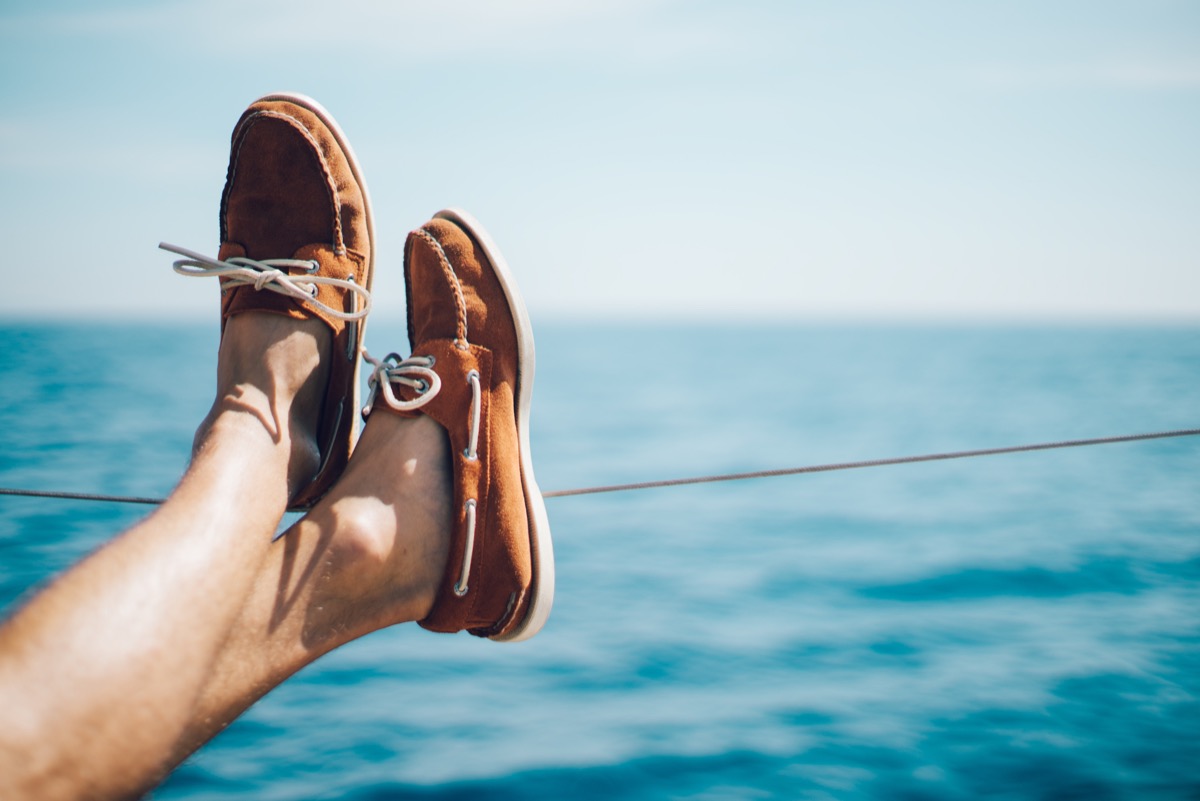If You’re Over 65, Don’t Wear These 5 Shoes, Podiatrists Warn

Many of us participate in lots of behaviors that our doctors might say tsk-tsk to: For example, listening to music on full blast, choosing a sugary drink over water, or sitting all day with hardly a 10-minute walk in our routine. These unhealthy habits extend to your feet, too—including the shoes you wear. That’s especially true over the age of 65 when injuries and wear and tear become more common. That’s why we asked podiatrists for the footwear they recommend skipping in your seventh decade. These shoes could lead to an increased risk of trips and falls, as well as foot and ankle problems and pain. Swap ‘em out for a healthier choice!
RELATED: If You’re Over 65, Don’t Wear These 7 Clothing Items on a Walk.
1
Zipper sneakers

Maurice Verhagen, owner and certified podiatrist at Penninx Schoenen, says he’s noticed that zipper sneakers are becoming more popular with the over-65 crowd. However, they can be dangerous when they don’t close completely or come open (even just a bit!) when walking.
“This makes the shoes not properly secured to the feet, increasing the risk of tripping,” he says. “My advice is to avoid sneakers that do not provide adequate foot and ankle support and instead choose models with adjustable closures, such as laces or Velcro.” That support is crucial for stability.
2
Fluffy slippers

The shoes you wear outside the house aren’t the only ones that matter—your indoor footwear also makes a difference.
“Wearing slippers at home that do not fit properly is a surprising risk, and it significantly increases the risk of tripping and falling, even though it might seem comfortable,” says Verhagen. “This is especially a problem when balance becomes impaired.”
You’ll want to select a stable, well-fitting slipper with a closed heel and Velcro closure. “These not only help you stand more firmly on your feet but also reduce the risk of falls,” Verhagen explains.
RELATED: 10 Shoes That Are Making You Look Older.
3
Slip-on boat shoes

Boat shoes are classic summer footwear that looks great with everything from chinos to shorts to bathing suits. But if you’re looking for foot support, you’ll want something else.
“They do not support the arch, and they typically lead to injuries due to the lack of stability,” says Nicole Brouyette, DPM, a podiatrist at Henry Ford Health. “I look for stability as well as anti-slip for this age group.”
You’ll also want arch support or a medical-grade orthopedic insert if you prefer flat shoes.
4
Very high heels

It’s no secret podiatrists aren’t big on heels. “Generally speaking, high heels are not recommended if they’re higher than two and a half inches, which creates instability, too much pressure on the ball of the foot, and increases chances of ankle sprains,” says Bruce Pinker, DPM, foot and ankle surgeon at Progressive Foot Care.
“The typical Louboutin is not recommended, especially for older women, as it is usually higher than two and a half inches and, although aesthetically pleasing, can lead to foot concerns if worn often,” he adds. A lower, sturdier block heel is a much better pick.
RELATED: 5 Items You Shouldn’t Wear on Hot Days If You’re Over 65.
5
Flip-flops

Finally, while flip-flops might be the most convenient beach shoe, they don’t hold up to podiatrists’ standards.
“Flip-flops offer no support and cushioning, which can lead to discomfort, fatigue, and even conditions like plantar fasciitis or Achilles tendonitis, especially for older individuals whose feet may require more support due to age-related changes,” says Margaret Trevillion, MSc, a UK-based podiatrist with Walk This Way Podiatry. “This is due to overuse of your toes and muscles and tendons in the front of the leg when wearing the flip flops.”
The lack of ankle support can also lead to trips and falls—and that’s especially true if the shoes get wet, which they frequently do!